The Future Of Hyper-Connected Beyond 5G Networks at 6G Wireless Summit 2020

POSTPONED: The Future of Hyper-Connected Beyond 5G Networks
Co-located with 6G Wireless Summit
Levi | Lapland | Finland
Friday 20 March 2020 | 9:00 - 12:00
**** NOTICE ****
IEEE has been monitoring the developing Coronavirus outbreak.
The safety and well-being of all conference participants are our priorities After studying and evaluating the announcements, guidance, and news released by relevant national departments, we are sorry to announce that this event will be postponed.
Please stay connected with the Future Networks Initiative for information on future events similar to this one.
We apologize for any inconvenience this has caused.
Overview
Till the 5G standardization and its deployment, the primary focus has been on engineering objectives and KPIs. As we move beyond the present-day networks, the objectives should also include human and societal impacts of networks (both wired and wireless), such that the quality of life for everyone is improved, including those who have yet to experience the value of the Internet. This is because our future society will be increasingly digitized, hyper-connected and globally data-driven. This implies that the Future Networks should be inclusive and useable by everyone. Softwarization of the networks at the scale of IT infrastructure, use of ML, blockchain and AI are bound to play a key role to enable this societal transformation. System optimization and flexible architectures are going to key to be the key requirements for 6G networks
The goal of the Future Networks Workshop/Forum is to present and discuss the latest insights and innovations from industry and academia on future networks. Nothing succeeds without innovations in business models, and, therefore, we especially welcome papers on techno-economics and business models. This workshop will include talks exploring the following topics of interest (but not limited to): wireless connectivity, backhaul solutions, devices, circuit technology and signal processing, distributed computing and storage, AI/ML/blockchain applied to future networks, services and applications.
Agenda
| Time | Title | Speaker |
| IEEE Future Networks and Roadmap Overview | Dr. Ashutosh Dutta | |
| Socio-technical Development CONA: Another Paradigm Change for 6G | Prof. Klaus David | |
| Connecting the Unconnected: The Killer App for 5G and Beyond! | Dr. Sudhir Dixit | |
| Performance Acceleration Challenges for the Next Generation of Virtualized Wireless Networks | Dr. Ivan Seskar | |
| Signal Processing Challenges for 6G Technologies | Prof. Vimal Bhatia | |
| Innovative Ideas for Future Networks | Prof. Zhengrong Lai | |
| The Challenges and Opportunities of Ultra-reliable and Ultra-low-latency Wireless Connectivity and Edge Computing for Next Generation Networks and Consumer Electronics | Prof. Mohammad Patwary | |
| Possible Directions Beyond 5G: A WWRF Perspective | Dr. Sudhir Dixit | |
| The Multi Business Model Innovation Brain in a Future Network of 6G | Prof. Peter Lindgren |
Abstracts
Socio-technical Development Methodology CONA: Another Paradigm Change for 6G
First, a vision about basic functionalities of 6G is presented. This vision includes the provisioning of ultrahigh Bitrates, like 100 or even 1000 Gbit/s, realised in special places only and e.g., a long range, low bitrate, ultra-low power, long latency (up to 1 s) service. For services, the inclusion of additional senses and emotions is suggested. Also, battery life of mobile devices should be substantially extended.
This provides the basis for a discussion about another important paradigm change for 6G: The sociotechnical design methodology CONA (Concretisation of normative requirements). This Methodology allows for including normative requirements from various social sciences. Why this is important and how it works is detailed by including legal requirements.
Connecting the Unconnected: The Killer App for 5G and Beyond!
The completion of 5G Release 16 is around the corner. While subsequent releases will continue to evolve with new features and capabilities (e.g., Release 17, and so on) added to 5G, the question that needs to be addressed is whether they add substantial improvements from the previous releases and when these enhancements would stop because of some yet unknown user requirements or network challenges, culminating into the launch of a new standardization perhaps called 6G or something different. This talk provides a brief overview of the present status of 5G and how its evolution is happening. Then we present the work going on in the WWRF toward a radically different vision beyond 5G with some possible directions. We present some key ideas and approaches being discussed at the WWRF and conclude the talk with some predictions on how the wireless world might look like in the 2030 time-frame from the standpoint of technology, use requirements and business models.
Possible Directions Beyond 5G: a WWRF Perspective
The completion of 5G Release 16 is around the corner. While subsequent releases will continue to evolve with new features and capabilities (e.g., Release 17, and so on) added to 5G, the question that needs to be addressed is whether they add substantial improvements from the previous releases and when these enhancements would stop because of some yet unknown user requirements or network challenges, culminating into the launch of a new standardization perhaps called 6G or something different. This talk provides a brief overview of the present status of 5G and how its evolution is happening. Then we present the work going on in the WWRF toward a radically different vision beyond 5G with some possible directions. We present some key ideas and approaches being discussed at the WWRF and conclude the talk with some predictions on how the wireless world might look like in the 2030 time-frame from the standpoint of technology, use requirements and business models.
The Multi Business Model Innovation Brain in a Future Network of 6G
Advanced 6G technologies integrated in Business Models and Multi Business Model Innovation processes introduce a new leadership and management era. Faster change of business models via advanced sensorisring, persuasive and virtual Business Models will be operating autonomously by powerful machines. Businesses will hereby be able to build Multi Business Model Innovation competence and advanced Multi Business Models Innovation Brains capable to innovated and operate Business Models in all types of Business Model Ecosystems. This will change classical ways of leadership and management of Business Models and open up to new combinations of Business Model, new processes of Multi Business Model Innovation and create a new generation of Business Models.
The speech present a new concept of a Multi Business Model Brain in a Future network of 6G and How it could operate supported by advance wireless and sensor technologies. The speech discuss how the Multi Business Model Innovation Brain will be evolved and how artificial intelligence technologies, deep learning, persuasive technologies, Multi Business Model Innovation pattern analysis and archetypes will support the Multi Business Model Innovation Brain. The importance and deeper understanding of the generic construction of “The Multi Business Model Brain” seems more and more critical to understand to increase the business potential of 6G.
Speakers
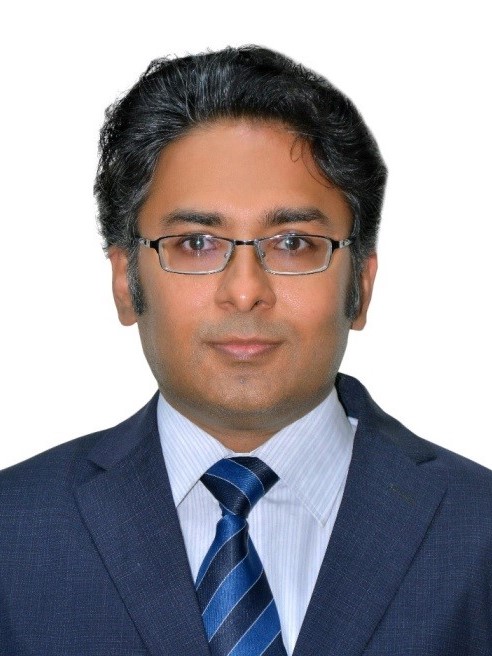 Vimal Bhatia is a Professor of Electrical Engineering at IIT Indore and an Adjunct Faculty at IIT Delhi and IIIT Delhi, India. He has a mix of academic and industrial experience both in India and the UK. He completed Ph.D. from Institute for Digital Communications at The University of Edinburgh, UK in 2005. During Ph.D. he also received IEE fellowship for collaborative research on OFDM at Carleton University, Ottawa, Canada. His research interests are in the broader areas of wireless communications, non-Gaussian non-parametric signal processing with applications to telecommunications and in software product development. He is currently PI/co-PI for externally funded projects of approx. USD 2.5 million with major funding from Ministry of Electronics and Information Technology, Department of Science and Technology, UKIERI, MHRD and Academy of Finland. He is a reviewer for IEEE, Elsevier, and IET. He is currently a Senior Member of IEEE, Fellow IETE and certified SCRUM Master. He is also the General Co-Chair for IEEE ANTS 2018, and General Vice-Chair for IEEE ANTS 2017, and is organising URSI 2020 (Rome, Italy) C15 Workshop on Visible Light Communications. He is currently He is also working on pan-IIT 5G Testbed development. He has authored or co-authored over 220 papers in peer-reviewed journals/conferences, and 11 patents filed in India.
Vimal Bhatia is a Professor of Electrical Engineering at IIT Indore and an Adjunct Faculty at IIT Delhi and IIIT Delhi, India. He has a mix of academic and industrial experience both in India and the UK. He completed Ph.D. from Institute for Digital Communications at The University of Edinburgh, UK in 2005. During Ph.D. he also received IEE fellowship for collaborative research on OFDM at Carleton University, Ottawa, Canada. His research interests are in the broader areas of wireless communications, non-Gaussian non-parametric signal processing with applications to telecommunications and in software product development. He is currently PI/co-PI for externally funded projects of approx. USD 2.5 million with major funding from Ministry of Electronics and Information Technology, Department of Science and Technology, UKIERI, MHRD and Academy of Finland. He is a reviewer for IEEE, Elsevier, and IET. He is currently a Senior Member of IEEE, Fellow IETE and certified SCRUM Master. He is also the General Co-Chair for IEEE ANTS 2018, and General Vice-Chair for IEEE ANTS 2017, and is organising URSI 2020 (Rome, Italy) C15 Workshop on Visible Light Communications. He is currently He is also working on pan-IIT 5G Testbed development. He has authored or co-authored over 220 papers in peer-reviewed journals/conferences, and 11 patents filed in India.
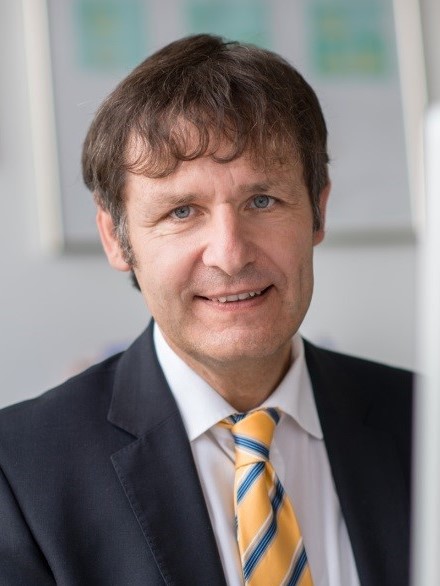 Prof. Dr. Klaus David is a full professor at the University of Kassel since 2000. He studied Physics at the University of Siegen (Germany). Then he was for 4 years researcher with IMEC in Gent (Belgium). Between 1992 - 1998, he was with T-Mobile (Münster, Bonn, Germany) as project leader and group head. Then he became Professor at the chair for mobile systems at the Technical University of Brandenburg (BTU, Cottbus, Germany) between 1998 - 2000. Here he was a co-founder of the lesswire AG and department head at IHP. Altogether he was working and living for about 5 years outside of Germany (UK, Belgium, USA, and Japan). Prof. David has filed more than 10 patents, has written 2 Textbooks, and has published more than 200 publications. He is active in international organisations, like:
Prof. Dr. Klaus David is a full professor at the University of Kassel since 2000. He studied Physics at the University of Siegen (Germany). Then he was for 4 years researcher with IMEC in Gent (Belgium). Between 1992 - 1998, he was with T-Mobile (Münster, Bonn, Germany) as project leader and group head. Then he became Professor at the chair for mobile systems at the Technical University of Brandenburg (BTU, Cottbus, Germany) between 1998 - 2000. Here he was a co-founder of the lesswire AG and department head at IHP. Altogether he was working and living for about 5 years outside of Germany (UK, Belgium, USA, and Japan). Prof. David has filed more than 10 patents, has written 2 Textbooks, and has published more than 200 publications. He is active in international organisations, like:
- IEEE, 2015 – 2018 EIC IEEE VT Magazine (impact factor (IF) increased to larger 6)
- Wireless World Research Forum (WWRF), elected member of the steering board 2016 – 2021
- Reviewer for the German Research Organisation (Deutsche Forschungsgesellschaft (DFG)), the ministry of research and education (Bundesministerium für Bildung und Forschung (BMBF)), and of the EU
His research focuses on mobile applications and networks, context awareness, machine learning, and software (architectures). Application areas include: Digital Work, Smart City (mobility, energy efficiency (home networking, smart grid), and 6G.
Since 2005 Prof. David is a co-founder and director of the ITeG (Wissenschaftliches Zentrum für Informationstechnik-Gestaltung, in Engl. Centre for interdisciplinary IT design). In 2000 he was co-founder of lesswire and in 2010 he was a co-founder of the start-up PhoneTec. From 2014 till 2017 Prof. David was the co-ordinator of the LOEWE excellence in research activity SOLIN.
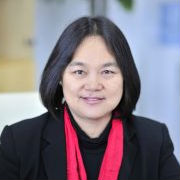
Chih-Lin I received her Ph.D. degree in electrical engineering from Stanford University. She has been working at multiple world-class companies and research institutes leading the R&D, including AT&T Bell Labs; Director of AT&T HQ, Director of ITRI Taiwan, and VPGD of ASTRI Hong Kong. She received the IEEE Trans. COM Stephen Rice Best Paper Award, the IEEE ComMag Fred W. Ellersick Prize Best Paper Award, is a winner of the CCCP National 1000 Talent Program, and has won the 2015 Industrial Innovation Award of IEEE Communication Society for Leadership and Innovation in Next-Generation Cellular Wireless Networks.
In 2011, she joined China Mobile as its Chief Scientist of wireless technologies, established the Green Communications Research Center, and launched the 5G Key Technologies R&D. She is spearheading major initiatives including 5G, C-RAN, high energy efficiency system architectures, technologies and devices, green energy, and wireless big data for network embedded intelligence. She has led the launch of Wireless AI Alliance (WAIA) and O-RAN (Open RAN) Alliance.
She was an Area Editor of IEEE/ACM Trans. NET, an elected Board Member of IEEE ComSoc, Chair of the ComSoc Meetings and Conferences Board, and Founding Chair of the IEEE WCNC Steering Committee. She was a Professor at NCTU, a hih-Lin I received her Ph.D. degree in electrical engineering from Stanford University. She has been working at multiple world-class companies and research institutes leading the R&D, including AT&T Bell Labs; Director of AT&T HQ, Director of ITRI Taiwan, and VPGD of ASTRI Hong Kong. She received the IEEE Trans. COM Stephen Rice Best Paper Award, the IEEE ComMag Fred W. Ellersick Prize Best Paper Award, is a winner of the CCCP National 1000 Talent Program, and has won the 2015 Industrial Innovation Award of IEEE Communication Society for Leadership and Innovation in Next-Generation Cellular Wireless Networks.
In 2011, she joined China Mobile as its Chief Scientist of wireless technologies, established the Green Communications Research Center, and launched the 5G Key Technologies R&D. She is spearheading major initiatives including 5G, C-RAN, high energy efficiency system architectures, technologies and devices, green energy, and wireless big data for network embedded intelligence. She has led the launch of Wireless AI Alliance (WAIA) and O-RAN (Open RAN) Alliance.
She was an Area Editor of IEEE/ACM Trans. NET, an elected Board Member of IEEE ComSoc, Chair of the ComSoc Meetings and Conferences Board, and Founding Chair of the IEEE WCNC Steering Committee. She was a Professor at NCTU, an Adjunct Professor at NTU, and an Adjunct Professor at BUPT. She is the Chair of FuTURE 5G SIG, the Chair of WAIA Executive Committee, the Chair of O-RAN TSC, an Executive Board Member of GreenTouch, a Network Operator Council Founding Member of ETSI NFV, a Steering Board Member and Vice Chair of WWRF, a Steering Committee member and the Publication Chair of IEEE 5G Initiative, a member of IEEE ComSoc SDB, SPC, and n Adjunct Professor at NTU, and an Adjunct Professor at BUPT. She is the Chair of FuTURE 5G SIG, the Chair of WAIA Executive Committee, the Chair of O-RAN TSC, an Executive Board Member of GreenTouch, a Network Operator Council Founding Member of ETSI NFV, a Steering Board Member and Vice Chair of WWRF, a Steering Committee member and the Publication Chair of IEEE 5G Initiative, a member of IEEE ComSoc SDB, SPC, and CSCN-SC, and a Scientific Advisory Board Member of Singapore NRF. Her current research interests center around “From Green & Soft to Open & Smart”.
 Zhengrong Lai is currently director of Wireless Technology Innovation Center in Guangdong Communications & Networks Institute, Guangzhou, China. He started his communication career as design engineer in ZTE corporation, then system architect and R&D project manager to develop a series of products: PSTN/GSM BSC/Video Conference/3G Base Station/LTE/ Self-help AI hotel assistant, acted as a successful pioneer in these products and area. By the innovative ideas in Soft Defined Radio platform and first commercialized BBU+RRU separate realization, the advantages produced a lot in higher end market. He kept comprehensive contributions to CRAN, small cell, NGCOR, DATG, ORI, E2E network analysis, 5G vertical scenarios in his past experiences with T1 carriers and NGMN. He now is leading an ambitious project which cover many 6G hot candidate technologies research in the institute.
Zhengrong Lai is currently director of Wireless Technology Innovation Center in Guangdong Communications & Networks Institute, Guangzhou, China. He started his communication career as design engineer in ZTE corporation, then system architect and R&D project manager to develop a series of products: PSTN/GSM BSC/Video Conference/3G Base Station/LTE/ Self-help AI hotel assistant, acted as a successful pioneer in these products and area. By the innovative ideas in Soft Defined Radio platform and first commercialized BBU+RRU separate realization, the advantages produced a lot in higher end market. He kept comprehensive contributions to CRAN, small cell, NGCOR, DATG, ORI, E2E network analysis, 5G vertical scenarios in his past experiences with T1 carriers and NGMN. He now is leading an ambitious project which cover many 6G hot candidate technologies research in the institute.
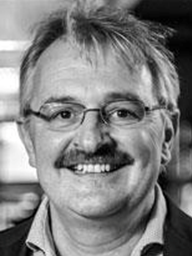 Peter Lindgren holds a full Professorship in Multi business model and Technology innovation at Aarhus University, Denmark – Business development and technology innovation and is Vice President of CTIF Global Capsule (CGC). He is Director of CTIF Global Capsule/MBIT Research Center at Aarhus University – Business Development and Technology and is member of Research Committee at Aarhus University – BSS.
Peter Lindgren holds a full Professorship in Multi business model and Technology innovation at Aarhus University, Denmark – Business development and technology innovation and is Vice President of CTIF Global Capsule (CGC). He is Director of CTIF Global Capsule/MBIT Research Center at Aarhus University – Business Development and Technology and is member of Research Committee at Aarhus University – BSS.
He has researched and worked with network based high speed innovation since 2000. He has been head of Studies for Master in Engineering – Business Development and Technology at Aarhus University from 2014 – 2016 and member of the management group at Aarhus University Btech 2014 - 2018. He has been researcher at Politechnico di Milano in Italy (2002/03), Stanford University, USA (2010/11), University Tor Vergata, Italy (2016/2017) and has in the time period 2007 – 2011. He has been the founder and Center Manager of International Center for Innovation www.ici.aau.dk at Aalborg University, founder of the MBIT research group and lab - http://btech.au.dk/forskning/mbit/ - and is cofounder of CTIF Global Capsule – www.ctifglobalcapsule.org.
He has worked as researcher in many different multi business model and technology innovations projects and knowledge networks among others E100 - http://www.entovation.com/kleadmap/, Stanford University project Peace Innovation Lab http://captology.stanford.edu/projects/peace-innovation.html, The Nordic Women in business project - www.womeninbusiness.dk/, The Center for TeleInFrastruktur (CTIF), FP7 project about ”multi business model innovation in the clouds” - www.Neffics.eu, EU Kask project – www.Biogas2020.se, Central Project, Motor5G, Recombine, Greenbizz. He is cofounder of five startup businesses amongst others - www.thebeebusiness.com , www.thedigibusiness.com, www.vdmbee.com
He is author to several articles and books about business model innovation in networks and Emerging Business Models. He has an entrepreneurial and interdisciplinary approach to research. His research interests are multi business model and technology innovation in interdisciplinary networks, multi business model typologies, sensing-, persuasive- and virtual- business models.
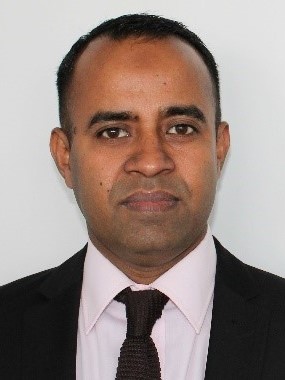 Mohammad Patwary is currently a Full Professor of Telecommunication Networks and Digital Productivity and the Head of the Intelligent Systems and Networks (ISN) research group at School of Computing and Digital Technology, Birmingham City University, UK. He is also research lead for a world’s first ‘5G Connected Forest’ project - accelerating destination branding for visitor economy in the UK; and has been serving as Principal Data Architect for a multicity 5G testbed in the UK that aims at accelerating digital productivity & develop urban connected community within the UK. He received the B.Eng. degree (Hons). in electrical and electronic engineering from the Chittagong University of Engineering and Technology, Bangladesh, in 1998, and the Ph.D. degree in telecommunication engineering from The University of New South Wales, Sydney, Australia, in 2005. He was with General Electric Company of Bangladesh from 1998 to 2000 and with Southern-Poro Communications, Sydney, from 2001 to 2002, as Research and Development Engineer. He was a Lecturer with The University of New South Wales from 2005 to 2006, and then a Senior Lecturer with Staffordshire University, UK, from 2006 to 2010. He was a Full Professor of Wireless Systems and Digital Productivity and the Chair of the Centre of Excellence on Digital Productivity with Connected Services, Staffordshire University, until 2016. His current research interests include - wireless communication systems design and optimization, signal processing and energy-efficient systems, future generation of cellular network architecture and business modelling for Data-economy.
Mohammad Patwary is currently a Full Professor of Telecommunication Networks and Digital Productivity and the Head of the Intelligent Systems and Networks (ISN) research group at School of Computing and Digital Technology, Birmingham City University, UK. He is also research lead for a world’s first ‘5G Connected Forest’ project - accelerating destination branding for visitor economy in the UK; and has been serving as Principal Data Architect for a multicity 5G testbed in the UK that aims at accelerating digital productivity & develop urban connected community within the UK. He received the B.Eng. degree (Hons). in electrical and electronic engineering from the Chittagong University of Engineering and Technology, Bangladesh, in 1998, and the Ph.D. degree in telecommunication engineering from The University of New South Wales, Sydney, Australia, in 2005. He was with General Electric Company of Bangladesh from 1998 to 2000 and with Southern-Poro Communications, Sydney, from 2001 to 2002, as Research and Development Engineer. He was a Lecturer with The University of New South Wales from 2005 to 2006, and then a Senior Lecturer with Staffordshire University, UK, from 2006 to 2010. He was a Full Professor of Wireless Systems and Digital Productivity and the Chair of the Centre of Excellence on Digital Productivity with Connected Services, Staffordshire University, until 2016. His current research interests include - wireless communication systems design and optimization, signal processing and energy-efficient systems, future generation of cellular network architecture and business modelling for Data-economy.
 Ivan Seskar is the Chief Technologist at WINLAB, Rutgers University responsible for experimental systems and prototyping projects. He is currently the program director for the COSMOS project responsible for the New York City NSF PAWR deployment, the PI for the NSF GENI Wireless project, which resulted in campus deployments of LTE/WiMAX base stations at several US universities, and the PI for the NSF CloudLab deployment at Rutgers. He has also been the co-PI and project manager for all three phases of the NSF-supported ORBIT mid-scale testbed project at WINLAB, successfully leading technology development and operations since the testbed was released as a community resource in 2005 and for which the team received the 2008 NSF Alexander Schwarzkopf Prize for Technological Innovation. Ivan is a co-chair of the IEEE Future Networks Testbed Working Group, a Senior Member of the IEEE, a member of ACM and the co-founder and CTO of Upside Wireless Inc
Ivan Seskar is the Chief Technologist at WINLAB, Rutgers University responsible for experimental systems and prototyping projects. He is currently the program director for the COSMOS project responsible for the New York City NSF PAWR deployment, the PI for the NSF GENI Wireless project, which resulted in campus deployments of LTE/WiMAX base stations at several US universities, and the PI for the NSF CloudLab deployment at Rutgers. He has also been the co-PI and project manager for all three phases of the NSF-supported ORBIT mid-scale testbed project at WINLAB, successfully leading technology development and operations since the testbed was released as a community resource in 2005 and for which the team received the 2008 NSF Alexander Schwarzkopf Prize for Technological Innovation. Ivan is a co-chair of the IEEE Future Networks Testbed Working Group, a Senior Member of the IEEE, a member of ACM and the co-founder and CTO of Upside Wireless Inc
Organizing Committee
 Sudhir Dixit is a Co-Founder, Senior Fellow and Evangelist at the Basic Internet Foundation in Oslo, Norway, and heads its US operations. He is also associated with the Academy of Finland 6G Flagship Programme, led by the Centre for Wireless Communications, University of Oulu, Finland. From 2015 to 2017 he was the CEO and Co-Founder of a start-up, Skydoot, Inc. From 2009 to 2015, he was a Distinguished Chief Technologist and CTO of the Communications and Media Services for the Americas Region of Hewlett-Packard Enterprise Services in Palo Alto, CA, and the Director of Hewlett-Packard Labs India in Palo Alto and Bangalore. Before joining HP, he held various leadership positions at BlackBerry, Nokia, NSN and Verizon Communications.
Sudhir Dixit is a Co-Founder, Senior Fellow and Evangelist at the Basic Internet Foundation in Oslo, Norway, and heads its US operations. He is also associated with the Academy of Finland 6G Flagship Programme, led by the Centre for Wireless Communications, University of Oulu, Finland. From 2015 to 2017 he was the CEO and Co-Founder of a start-up, Skydoot, Inc. From 2009 to 2015, he was a Distinguished Chief Technologist and CTO of the Communications and Media Services for the Americas Region of Hewlett-Packard Enterprise Services in Palo Alto, CA, and the Director of Hewlett-Packard Labs India in Palo Alto and Bangalore. Before joining HP, he held various leadership positions at BlackBerry, Nokia, NSN and Verizon Communications.
He has been a technical editor of IEEE Communications Magazine, and is presently a Board Member & Working Group Chair at the Wireless World Research Forum (WWRF). He is also on the editorial boards of IEEE Spectrum Magazine and Springer’s Wireless Personal Communications Journal. He is a Co-Chair of the Industry Engagement Committee of the IEEE Future Network Initiative and is on its Industry Outreach Board (IOB). In 2018, he was appointed a Distinguished Lecturer by the IEEE Communications Society. From 2010 to 2012, he was an Adjunct Professor of Computer Science at the University of California, Davis, and, since 2010, he has been a Docent at the University of Oulu, Finland. A Life Fellow of the IEEE, Fellow of IET and IETE, Dixit holds a Ph.D. from the University of Strathclyde, Glasgow, U.K. and an M.B.A. from the Florida Institute of Technology, Melbourne, Florida.
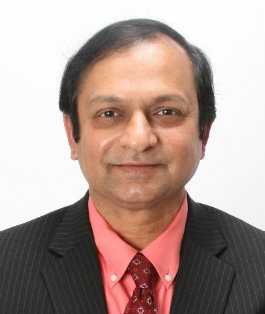
Dr. Ashutosh Dutta is currently the 5G Chief Strategist for the Communications Systems Branch at the Johns Hopkins University Applied Physics Laboratory (JHU/APL). He is also a JHU/APL Sabbatical Fellow and adjunct faculty at The Johns Hopkins University. His career, spanning more than 30 years, includes Director of Technology Security and Lead Member of Technical Staff at AT&T, CTO of Wireless for NIKSUN, Inc., Senior Scientist and Project Manager in Telcordia Research, Director of the Central Research Facility at Columbia University, adjunct faculty at NJIT, and Computer Engineer with TATA Motors. He has more than 90 conference and journal publications, three book chapters, and 31 issued patents. Ashutosh is co-author of the book, titled, “Mobility Protocols and Handover Optimization: Design, Evaluation and Application” published by IEEE and John & Wiley.
As a Technical Leader in 5G and security, Ashutosh has been serving as the founding Co-Chair for the IEEE Future Networks Initiative that focuses on 5G standardization, education, publications, testbed, and roadmap activities. He also serves as IEEE Communications Society's Distinguished Lecturer for 2017-2020. Ashutosh has served as the general Co-Chair for the premier IEEE 5G World Forums and has organized 65 5G World Summits around the world.
Ashutosh served as the chair for IEEE Princeton / Central Jersey Section, Industry Relation Chair for Region 1 and MGA, Pre-University Coordinator for IEEE MGA and vice chair of Education Society Chapter of PCJS. He co-founded the IEEE STEM conference (ISEC) and helped to implement EPICS (Engineering Projects in Community Service) projects in several high schools. Ashutosh has served as the general Co-Chair for the IEEE STEM conference for the last 10 years. Ashutosh served as the Director of Industry Outreach for IEEE Communications Society from 2014-2019. He was recipient of the prestigious 2009 IEEE MGA Leadership award and 2010 IEEE-USA professional leadership award. Ashutosh currently serves as Member-At-Large for IEEE Communications Society for 2020-2022.
Ashutosh obtained his BS in Electrical Engineering from NIT Rourkela, India; MS in Computer Science from NJIT; and Ph.D. in Electrical Engineering from Columbia University, New York under the supervision of Prof. Henning Schulzrinne. Ashutosh is a Fellow of IEEE and senior member of ACM.

